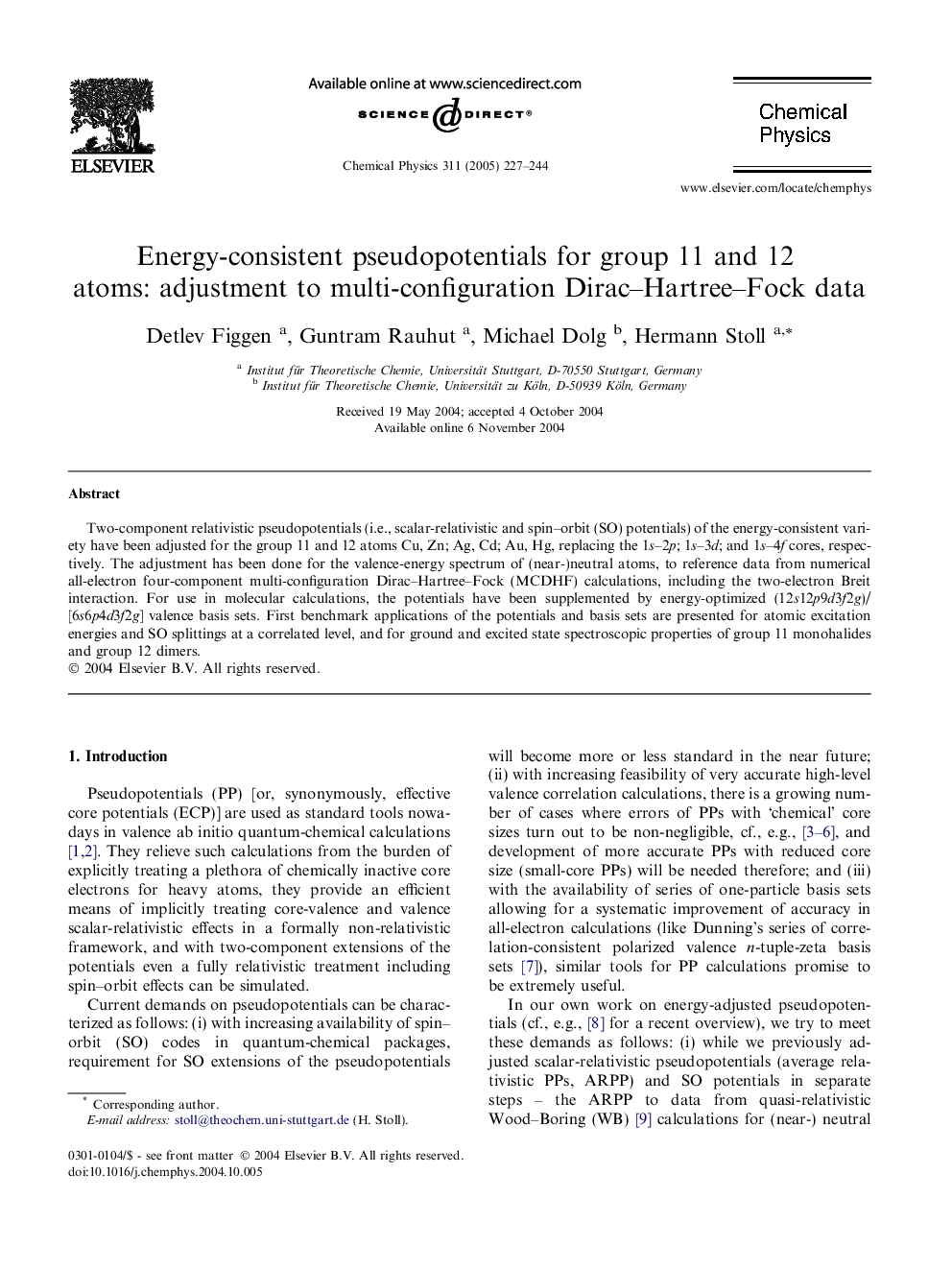| Article ID | Journal | Published Year | Pages | File Type |
|---|---|---|---|---|
| 9575423 | Chemical Physics | 2005 | 18 Pages |
Abstract
Two-component relativistic pseudopotentials (i.e., scalar-relativistic and spin-orbit (SO) potentials) of the energy-consistent variety have been adjusted for the group 11 and 12 atoms Cu, Zn; Ag, Cd; Au, Hg, replacing the 1s-2p; 1s-3d; and 1s-4f cores, respectively. The adjustment has been done for the valence-energy spectrum of (near-)neutral atoms, to reference data from numerical all-electron four-component multi-configuration Dirac-Hartree-Fock (MCDHF) calculations, including the two-electron Breit interaction. For use in molecular calculations, the potentials have been supplemented by energy-optimized (12s12p9d3f2g)/[6s6p4d3f2g] valence basis sets. First benchmark applications of the potentials and basis sets are presented for atomic excitation energies and SO splittings at a correlated level, and for ground and excited state spectroscopic properties of group 11 monohalides and group 12 dimers.
Related Topics
Physical Sciences and Engineering
Chemistry
Physical and Theoretical Chemistry
Authors
Detlev Figgen, Guntram Rauhut, Michael Dolg, Hermann Stoll,
